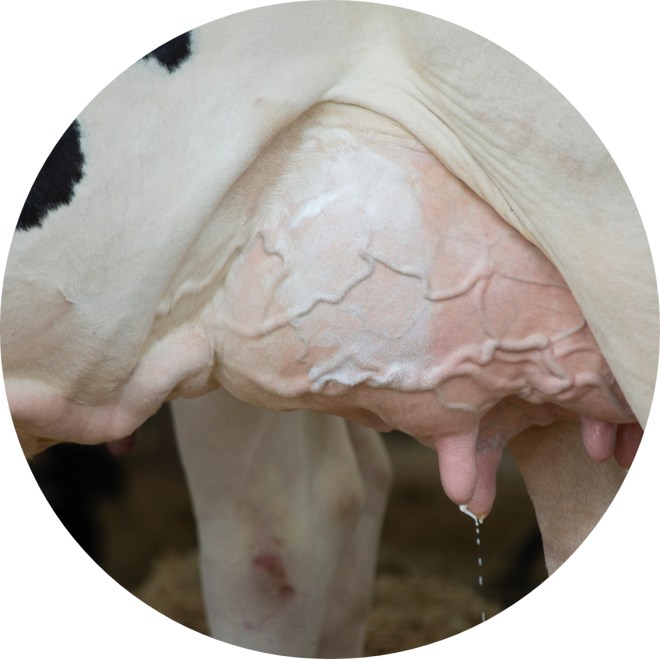The importance of udder health during the dry off period
The dry period is crucial in a cow's production cycle. It is when she gets a well-deserved break from the previous lactation and gears up for the next one. Managing this period can greatly affect the cow's comfort, udder health, milk quality, and overall productivity.
Understanding the challenges of the dry off period
During the dry off period, when milking is stopped, cows face these challenges:
- Expected udder engorgement: When the milk produced by a cow is not removed through milking, it accumulates in the udder and leads to engorgement. This condition can cause discomfort for the cow, affecting its overall welfare. This condition can make cows restless while standing and reduce their lying down behaviour to relieve pressure on the udder. Additionally, udder engorgement can have detrimental effects on the health of the udder and potentially impact future milk production. It is important to promptly address and prevent udder engorgement to ensure the well-being and productivity of cows.
- Risk of mastitis: Udder engorgement is a condition that can also lead to an increased risk of mastitis. During this time, the pressure in the mammary glands keeps the teat ends open, which can result in milk leakage. Unsealed teat ends further increase the risk of intramammary infections (IMI) during the dry period. Implementing strategies such as using teat sealants and reducing milk production during the dry off phase can help to mitigate this risk.
- Nutrition: Nutrition plays a pivotal role in maintaining health, and this is especially true during the dry period. Traditionally, adjustments to the diet are made during this time to meet changing nutritional requirements. Ensuring a balanced intake of minerals and nutrients during the dry period is crucial for a seamless transition.
- Social change: Cows generally change groups and/or locations after dry off, meaning they must re-establish their place in the social order. This is an additional cause of stress that might worsen any of the above challenges.
Traditionally, dairy farmers have used two methods to dry off cows: abrupt dry off, where milking stops all at once, or gradual dry off, where milking is slowly decreased over a few days until it stops completely. Both methods can be combined with changes in diet to help reduce milk production at dry off.


1. Rajala-Schultz PJ, Hogan JS, Smith KL. Short communication: association between milk yield at dry-off and probability of intramammary infections at calving. J Dairy Science. February (2005), 88(2):577-9. doi: 10.3168/jds.S0022-0302(05)72720-X
2. Maynou e al., 2018 Effects of oral administration of acidogenic boluses at dry-off on performance and behavior of dairy cattle. J. Dairy Science, September (2018), 10.3168/jds.2018-14693
3. Bushe, T., and S. P. Oliver. "Natural protective factors in bovine mammary secretions following different methods of milk cessation." Journal of dairy science 70.3 (1987): 696-704


